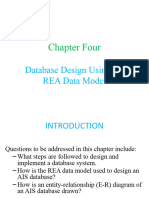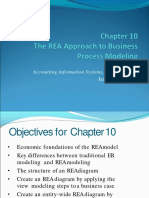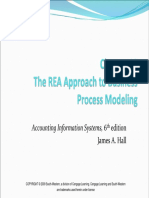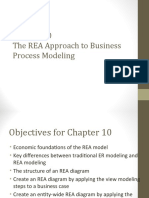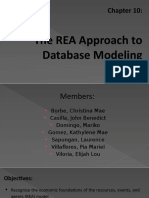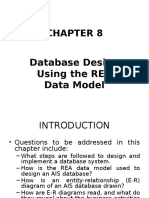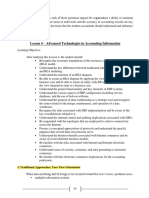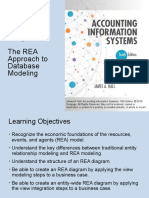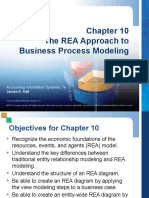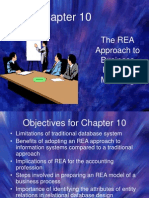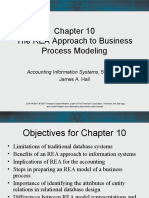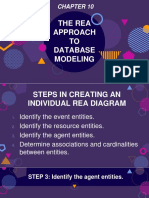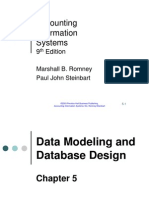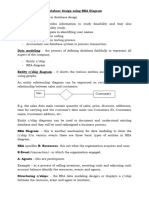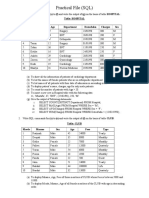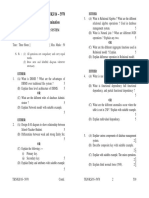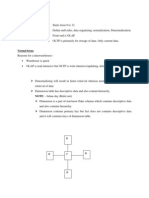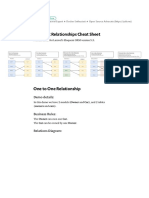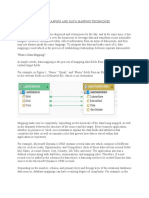0% found this document useful (0 votes)
86 views54 pagesCHAPTER 3 Data Modeling and Database Design
The document discusses the steps for designing and implementing a database system using the REA data model. It describes the six steps as initial planning, identifying user needs, developing schemas, translating schemas into database structures, transferring data, and using/maintaining the system. The REA model classifies entities as resources, events, and agents and provides a template for structuring relationships among these entities. Developing an REA diagram involves identifying economic exchange events and resources/agents, decomposing events, and determining cardinalities.
Uploaded by
Ermi AlemCopyright
© © All Rights Reserved
We take content rights seriously. If you suspect this is your content, claim it here.
Available Formats
Download as PPT, PDF, TXT or read online on Scribd
0% found this document useful (0 votes)
86 views54 pagesCHAPTER 3 Data Modeling and Database Design
The document discusses the steps for designing and implementing a database system using the REA data model. It describes the six steps as initial planning, identifying user needs, developing schemas, translating schemas into database structures, transferring data, and using/maintaining the system. The REA model classifies entities as resources, events, and agents and provides a template for structuring relationships among these entities. Developing an REA diagram involves identifying economic exchange events and resources/agents, decomposing events, and determining cardinalities.
Uploaded by
Ermi AlemCopyright
© © All Rights Reserved
We take content rights seriously. If you suspect this is your content, claim it here.
Available Formats
Download as PPT, PDF, TXT or read online on Scribd
/ 54





